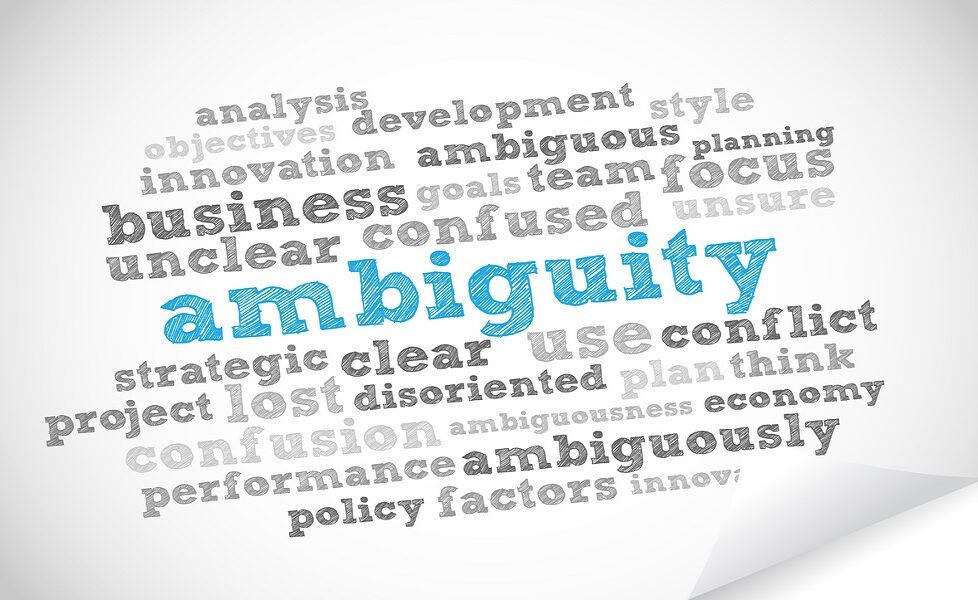How To Deal With Ambiguity At Work

LINKS TO CONTENT
TogglePoints of reference are hazy. Doubt creeps in. Too little information cripples. Too much information becomes meaningless. Teams become confused. These are just some of the consequences when facing ambiguity at work. When operational environments are increasingly complex and ambiguous, making a decision, let alone the best decision becomes challenging. It’s really hard to know which strategy to follow when making meaning and making sense of the circumstance is unclear. To handle doubt, to work through the fog of modern-day operational environments, leaders can do the following:
Each organisation has a mission statement. If you don’t have one, craft one. The mission statement needs to be the reason d’être of the firm. What is it you want to accomplish and why that goal? Explore different interpretations of the goal.
Ambiguity at work has this nasty habit of making people second-guess themselves. No decision is ever 100% accurate. Determine an acceptable level of uncertainty, of unknowns, in a decision and proceed. At the time the decision is made identify benchmarks that determine progress towards a goal. Be on the lookout for red flags. These are warnings that the course of action taken will not lead you to your goals. By being flexible in how you reach your goal, you can reduce the doubt of one particular strategy. You’ll get there. You may need to adjust the course several times but you’ll get there.
Too many leaders need absolute certainty before proceeding. Absolute certainty never existed. To increase the amount of trust you have in yourself, improve your resourcefulness and resiliency. In ambiguous environments, there is likely going to be a need for several attempts as well as the use and creation of different resources and mechanisms. Things are more challenging psychologically and emotionally when the end is not in sight. Resiliency skills are important for ensuring motivation for the long haul.
It will take several attempts and likely a few changes in strategy to reach your goal. But one goal is not the end all be all. Set up your goals sequentially so that when you achieve one, you’re already well underway to reaching your second. This helps you keep the big picture in mind as well as makes you challenge which goals you’re chasing and why. If you find yourself pulled in several directions to reach your targets, it’s likely that some of your objectives aren’t necessary, will drain you of needed resources or aren’t instrumental in ensuring your overall success.
Renée helps business get unstuck. Through business relationship mapping, conflict resolution and leadership development, Renée helps entrepreneurs and businesses understand their ecosystems, identify underutilised resources and opportunities to engage.
Renée works at both ends of the spectrum: from the fun stuff of building excellent teams to dealing with low morale. She helps managers take workplace bullies by the horns, address long standing conflicts, all of the frustrating stuff to harnessing the energy in a conflict to collaborate, innovate, and build better businesses.
Renée is a speaker, trainer, coach and consultant.
